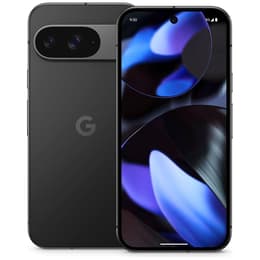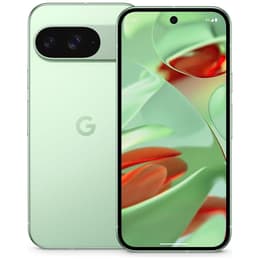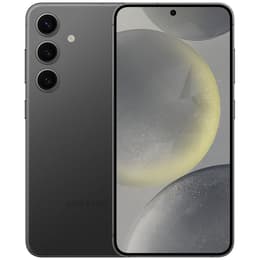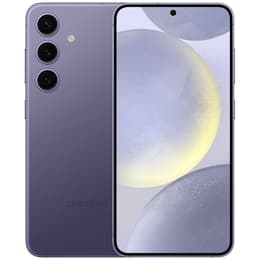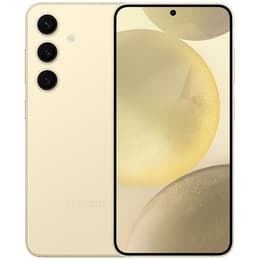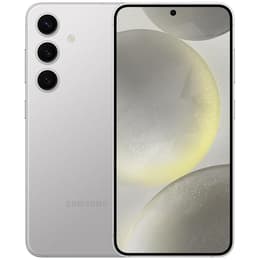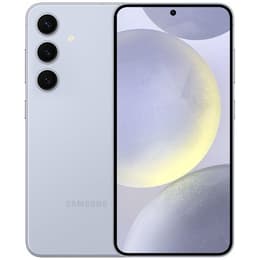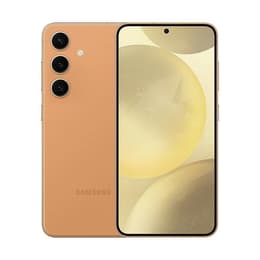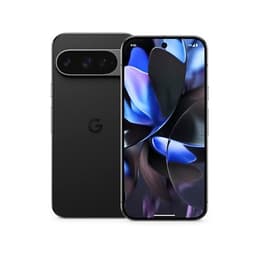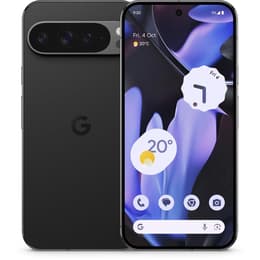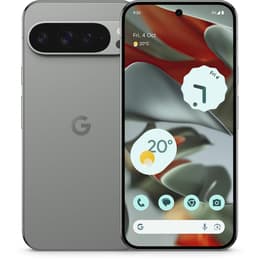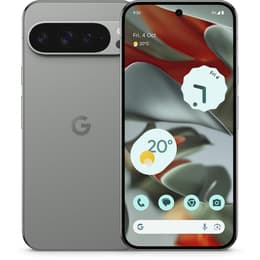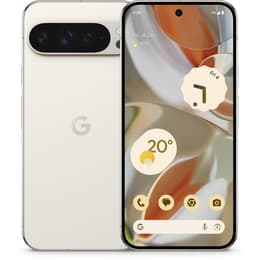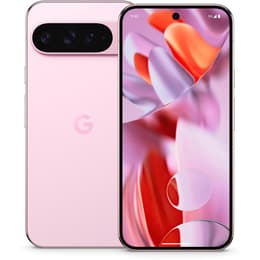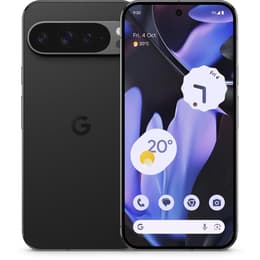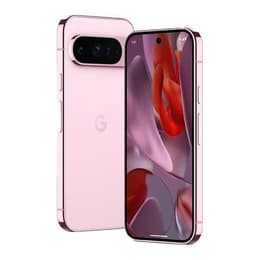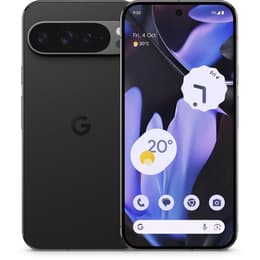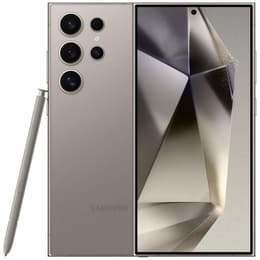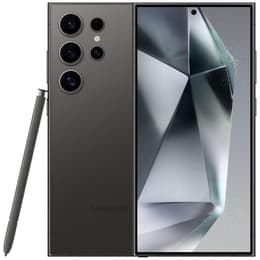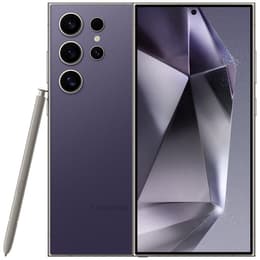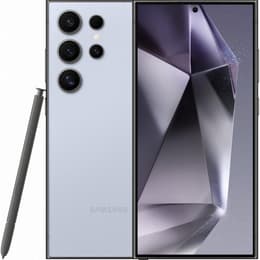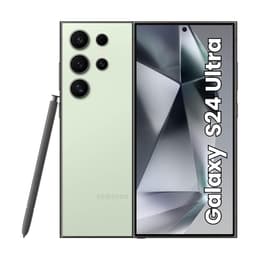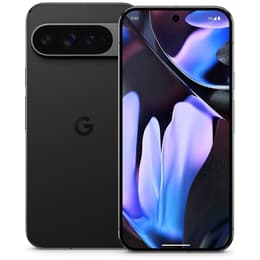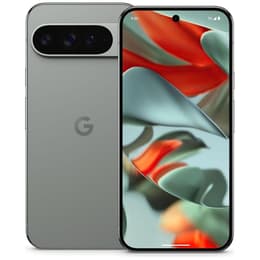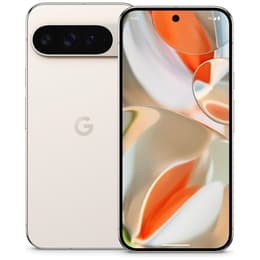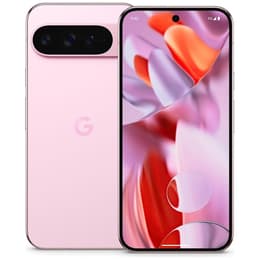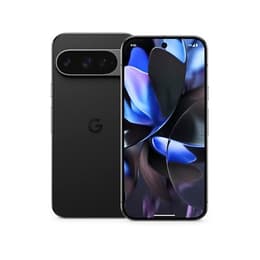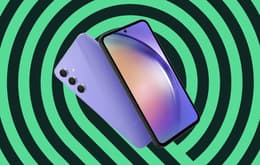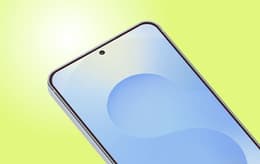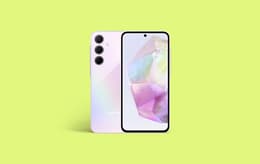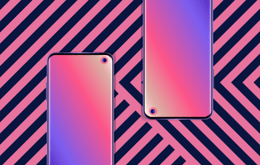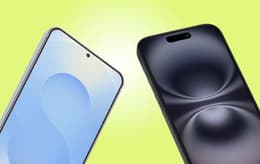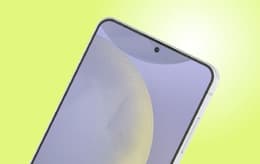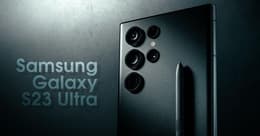Samsung and Google are the two most notable producers of Android phones. This is unsurprising, as Google created Android, and Samsung has been using it since debuting the first Galaxy phone in 2009. Fast forward and Samsung has released the Galaxy S25 series, with Google right on its tail with the Pixel 9. But right now, let's focus on the Galaxy S24 series and how it stacks up against the Pixel 9. Which is the better series? The Android superphones face off to determine a winner.
Verdict: The Google Pixel 9 series narrowly beats the Galaxy S24
When two superphones face off, you can expect that it's going to be a tight race. That is the case here, but the Pixel 9 series takes the win, just barely. The Pixel 9 series edges out the Galaxy S24 series with its stunning displays, decent performance, superb cameras, and seven years of updates. Its more rounded designs are more comfortable to hold, and Google's AI features feel more refined. The Galaxy S24 series puts up a strong fight, though, delivering excellent performance, extended software support, flexible cameras, and unique features like the built-in stylus and DeX mode. DeX mode on the Galaxy S24 allows you to connect your phone to a monitor, keyboard and mouse, and use a desktop-like interface with resizeable windows for multitasking and enhanced productivity. Both series offer excellent devices, but the Pixel 9 edges ahead overall. However, the Galaxy S24 series might be better if you're a gamer or power user.
Why you can trust this Galaxy S24 vs. Google Pixel 9 series comparison
At Back Market, we have a single goal: to make tech affordable, reliable, and sustainable. As that's our only goal, we don't play favourites; we call it how we see it. This comparison is based on an objective analysis of both series, focusing on real-world performance, long-term value, user experience, and the stuff that matters day to day. We've considered key factors like design and build, display quality, camera quality, performance, AI features, battery life, and long-term usability to help you make an informed decision. No favouritism, no sales talk. Just a transparent and honest look at which phone is right for you.
Samsung Galaxy S24 vs. Google Pixel 9
Winner: Razor-thin margins
Both the Galaxy S24 and Pixel 9 are excellent compact Android flagships. Looking at the specs alone they are evenly matched, and choosing the best of the two phones is tricky. It boils down to your priorities. Their designs are closely matched, barring the camera bar on the Pixel 9’s rear, but both phones are compact and sleek. The Pixel 9 has a brighter display, but the S24 features an LTPO panel. The S24 offers a dedicated telephoto camera, while the Pixel 9 relies on software tricks for high-quality results. Performance-wise, the Galaxy S24 is a powerhouse and has built-in AI features, but the Pixel 9 has tighter AI integration. Both phones are supported with up to seven years of software updates. These two phones are neck and neck, and you won’t be disappointed whichever you choose.
Specifications
Feature | Galaxy S24 | Pixel 9 |
|---|---|---|
Display size | 6.2 in | 6.3 in |
Resolution | 2340 x 1080 pixels, 19.5:9 ratio, 416 ppi | 2400 x 1080 pixels, 20:9 ratio, 418 ppi |
Display features | HDR support Corning Gorilla Glass Victus 2 | HDR support Corning Gorilla Glass Victus 2 |
System chip | Qualcomm Snapdragon 8 Gen 3 | Google Tensor G4 |
Memory (RAM) | 8GB | 12GB |
Storage | 128GB 256GB 512GB | 128GB 256GB |
Battery capacity | 4000mAH | 4700mAh |
Charging speed | Wired - 25W Wireless - 15W | Wired - 27W Wireless - 15W |
Rear camera | 50MP (main) + 10MP (telephoto) + 12MP (ultrawide) | 50MP (main) + 48MP (ultrawide) |
Front camera | 12MP | 10.5MP |
Dimensions | 5.79 x 2.78 x 0.30 in | 6.02 x 2.83 x 0.33 in |
Weight | 5.93 oz | 6.98 oz |
Colours | Cobalt Violet Onyx Black Marble Grey Sandstone Orange Amber Yellow Sapphire Blue Jade Green | Wintergreen Peony Obsidian Porcelain |
Design and build
The Galaxy S24 and the Pixel 9 are very similar. Both are compact and are some of the easiest phones to use with one hand. The devices boast premium materials, including an aluminium frame with Gorilla Glass Victus 2 protecting the front and rear. Both the Galaxy S24 and Pixel 9 look premium, and thanks to their Gorilla Glass they should survive a fall or two without any cracks. They share the same buttons and cutouts and boast an IP68 rating, meaning they're water- and dust-resistant.
They are not identical, though The main difference is on the back, where the Pixel 9 features a striking camera bar while the S24 uses a triple camera setup in a vertical line. Both phones have a selfie camera placed at the same location (top centre in a punch-hole cutout), but the sensors are different. In terms of size, the Galaxy S24 is slightly shorter, narrower, and slimmer than the Pixel 9 and, consequently, weighs considerably less at 5.93 oz compared to the Pixel 9's 6.98 oz. The S24 also offers more colour options, with seven choices, compared to the Pixel 9's four.
Display quality
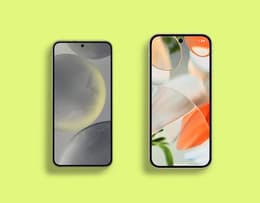
The Galaxy S24 and Pixel 9 feature bright and colourful displays.
The Galaxy S24 and Pixel 9 feature bright and colourful displays. However, the Pixel 9's display is slightly larger than the Galaxy S24's, but not by much. At 6.3 in, the Pixel 9's AMOLED display is just larger than the 6.2-inch Dynamic LTPO AMOLED display on the Galaxy S24 (the S24's LTPO panel means it can freely adjust between 1Hz and 120Hz refresh rates). Both displays support a 120Hz refresh rate and HDR10+, but the Pixel 9's display is slightly brighter at 2,700 nits, compared to the Galaxy S24's peak brightness of 2,600 nits.
The S24 and Pixel 9 feature similar resolutions, at 2340 x 1080 pixels and 2400 x 1080 pixels, respectively. Colour quality is excellent on both displays, and you should enjoy watching videos and gaming without any jitter or ghosting effects. The high refresh rate means both phones offer smooth performance and quick touch responses, and you should be satisfied with either screen, but the Pixel 9 just ever so slightly has the edge over the S24.
Performance
Regarding performance, the Galaxy S24 leaves the Pixel 9 in the dust. Whether it's the international Exynos 2400 or the Qualcomm Snapdragon 8 Gen 3 processor, the Pixel 9's Tensor G4 doesn't come close. In fact, you'll find that in most commonlyused benchmark tests, the Pixel 9 is outmatched even by the Galaxy S23.
Google stresses that its phones are built for AI performance, and sure enough, the Pixel 9 comes with 12GB of RAM to ensure it can handle AI tasks better (the Galaxy S24 comes with only 8GB of RAM). However, when it comes to multitasking and high-end gaming, the Pixel 9 is clearly more hesitant than the S24. Both manufacturers promise seven years of software updates, but the Pixel 9's subpar performance means that the Galaxy S24 looks to be the more future-proof device despite the RAM deficit.
The age of AI is here, and both phones offer several AI features. The S24 has Galaxy AI, while the Pixel 9 has Google's Gemini AI. Most Galaxy AI features are exclusive to Samsung Galaxy phones, but thanks to the close partnership between the two companies, some Gemini AI features are available on Galaxy devices. That said, many Gemini AI features remain limited to the latest Pixel devices, including the Pixel 9.
Neither phone offers expandable storage, and entry-level devices come with 128GB of space, with the S24 offering 256GB and 512GB options, while the Pixel 9 offers only a 256GB option as its largest.
Cameras
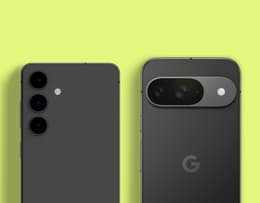
The Galaxy S24 and Pixel 9 are similar phones, but their camera setups take very different approaches.
So far, the Galaxy S24 and Pixel 9 share many similarities. Regarding camera quality, however, the two companies take vastly different approaches. With the Pixel 9, you get two-thirds of the Pixel 9 Pro XL experience, with Google providing the same wide and ultrawide sensors but omitting the telephoto camera altogether. Contrarily, the Galaxy S24 is a scaled-down version of the S24 Ultra, with the phone including three camera types (one less than the S24 Ultra): wide, ultrawide and telephoto, but with lower-grade components.
The Pixel 9 has a 50MP main sensor and a 48MP ultrawide sensor with dual-pixel autofocus and a 123-degree field of view. The Galaxy S24 has a 50MP main sensor and a 12MP ultrawide sensor with a 120-degree field of view. The S24 also includes a dedicated 10MP telephoto camera with 3x optical zoom, giving it better range for distance shots.
Despite lacking in zoom capabilities, the Pixel 9 produces sharper and more detailed images, especially in low-light conditions. It might not have the flexibility of the Galaxy S24, but its image quality rivals that of the Pixel 9 Pro, while the Galaxy S24 confirms its place as a mid-tier option in Samsung's lineup. So which device has the better camera? It boils down to the better overall quality of the Pixel 9 versus more flexibility with the Galaxy S24.
Battery life and charging
One of the reasons the Pixel 9 is thicker and heavier than the Galaxy S24 is that it packs a much larger battery. The Pixel 9 features a 4,700mAh battery, while the Galaxy S24 has a 4,000mAh battery. Despite the Pixel 9's larger battery, it still doesn't provide a considerable advantage over the S24, as Samsung is extremely good at optimising energy. As a result, both devices should easily get you through the day. Regarding charging, the Pixel 9 supports 27W wired charging that will get you from 0% to 55% in 30 minutes, while the S24's 25W wired charging will get you to 50% within the same time. Both phones support wireless charging, too.
Samsung Galaxy S24 Ultra vs. Google Pixel 9 Pro
Winner: Google Pixel 9 Pro
The Galaxy S24 Ultra and Google Pixel 9 Pro are some of the best Android phones. Both devices have excellent builds, superb displays, and top-notch camera systems. Out of 5, both phones easily score 4.5, suggesting they are pretty even. However, taking a closer look, we must give the Google Pixel 9 Pro the win. All thanks to its comfortable build, impressive battery life, cleaner software, and excellent point-and-shoot camera experience. There are reasons to prefer the S24 Ultra too. It offers a beefier processor, a larger and brighter display, impeccable battery life, and excellent camera zoom capabilities. However, its large size, angular design, and higher price tag may limit its appeal to some users, giving the Pixel 9 Pro an edge.
Specifications
Feature | Galaxy S24 Ultra | Pixel 9 Pro |
|---|---|---|
Display size | 6.8 in | 6.3 in |
Resolution | 3088 x 1440 pixels, 19.5:9 ratio, 501 ppi | 2856 x 1280 pixels, 20:9 ratio, 497 ppi |
Display features | HDR support Corning Gorilla Glass Armor | HDR support Corning Gorilla Glass Victus 2 |
System chip | Qualcomm Snapdragon 8 Gen 3 | Google Tensor G4 |
Memory (RAM) | 12GB | 16GB |
Storage | 256GB 512GB 1TB | 128GB 256GB 512GB 1TB |
Battery capacity | 5000mAh | 4700mAh |
Charging speed | Wired - 45W Wireless - 15W | Wired - 27W Wireless - 21W |
Rear camera | 200MP (main) + 50MP (telephoto) + 10MP (telephoto) + 12MP (ultrawide) | 50MP (main) + 48MP (telephoto) + 48MP (ultrawide) |
Front camera | 12MP | 42MP |
Dimensions | 6.39 x 3.11 x 0.34 in | 6.02 x 2.83 x 0.33 in |
Weight | 8.22 oz | 7.02 oz |
Colours | Titanium Black Titanium Blue Titanium Gray Titanium Green Titanium Orange Titanium Violet Titanium Yellow | Obsidian Hazel Porcelain Rose Quartz |
Design and build
Unlike the Galaxy S24 and the Pixel 9, which share many physical similarities, there isn't much similarity between the Galaxy S24 Ultra and the Pixel 9 Pro. Starting with size, the S24 Ultra is much bigger and heavier than the Pixel 9 Pro. The S24 Ultra's hulking 6.39 x 3.11 x 0.34-inch footprint towers over the 6.02 x 2.83 x 0.33-inch Pixel 9 Pro. Samsung's flagship is also much heavier, weighing 8.22 oz, compared to the Pixel 9 Pro's modest 7.02 oz, with the S24 Ultra's titanium build making it tougher than Google's phone.
As mentioned, the two phones look very different from one another. The Google Pixel 9 Pro borrows heavily from Apple's design playbook. It features a flat metal rim and gently curved corners, visible in both the body and the display. Contrarily, the S24 Ultra has almost completely flattened its left and right edges (they're still slightly curved) and with its pointed corners, this results in a perfectly rectangular display.
The Pixel 9 Pro has Gorilla Glass Victus 2 protecting the front and rear, while the S24 Ultra has the tougher Corning Gorilla Armor doing the same job. Both phones have an IP68 rating for dust and water resistance. For the camera array, the Pixel 9 Pro has a striking camera bar that spans nearly the entire phone width, while the S24 Ultra separates its sensors into two neat columns on the back. Generally, the S24 Ultra is big and built like a tank, while the Pixel 9 Pro is more compact and pocketable.
Display quality
The size difference between the two phones is emphasised when analysing each one’s display. The Pixel 9 Pro has a 6.3-inch AMOLED display, while the S24 Ultra has a whopping 6.9-inch AMOLED panel. Samsung has increased the pixel count to better use the extra screen space with a 3088 x 1440 resolution. The Pixel 9 Pro has a lower 2856 x 1280 resolution, though it works out to a similar pixel density (505 ppi for the S24 Ultra and 495 ppi for the Pixel 9 Pro).
Surprisingly, the Pixel 9 Pro is much brighter, reaching a peak of 3,000 nits in HDR content, while the Galaxy S24 Ultra can only manage 2,600 nits. Still, both displays are brilliant and very visible outdoors on a bright day. Both phones use LTPO panels, meaning the displays can freely adjust between 1Hz and 120Hz refresh rates depending on the task, helping with energy efficiency.
Putting the size difference aside, these are two of the best displays on the market, delivering vibrant yet accurate colours. There isn't an obvious winner between the two, with the Pixel 9 Pro offering excellent brightness while the S24 Ultra provides more than enough real estate to enjoy watching videos and gaming.
Performance
The Galaxy S24 Ultra and the Pixel 9 Pro have their strengths, but when it comes to performance, the S24 Ultra wipes the floor with the Pixel 9 Pro. The Snapdragon 8 Gen 3 processor is much faster than the Tensor G4, beating it in CPU and GPU benchmarks. No matter the test, the S24 Ultra comes out on top. In fact, Google's processor falls behind so much that it raises concerns about its long-term performance. Both companies promise seven years of software updates, but the Pixel 9 Pro might struggle to keep up in just a few years.
That said, in everyday use, the difference isn't as noticeable. You will notice the Pixel 9 Pro struggling with heavy multitasking, however, while the S24 Ultra breezes through smoothly. Google's phone also tends to overheat on hot sunny days, especially during extended photo sessions, suggesting that it might be inefficient. However, when it comes to AI performance, the Pixel 9 Pro shines. Google has contended that its Tensor chips are built for AI, and the Pixel 9 Pro is packed with 16GB of RAM (the Galaxy S24 Ultra has only 12GB of RAM) to help run those advanced AI tasks.
Regarding gaming, the Galaxy S24 Ultra is the better choice. It breezes through demanding titles at silky smooth frame rates, barely getting warm. Both phones offer AI features (Galaxy AI for the S24 Ultra and Gemini AI for the Pixel 9 Pro) with some of the Galaxy AI features also available on the Pixel 9 Pro, but not vice versa.
Cameras
Both the Galaxy S24 Ultra and the Pixel 9 Pro have excellent cameras. There isn't much difference between the two systems, with both taking clear, crisp, vivid shots in all conditions. The Pixel 9 Pro uses a 50MP sensor for the main shooter, while the S24 Ultra opts for a 200MP sensor. The latter doubles down on pixel-binning techniques, but the Pixel 9 Pro takes better shots with its main sensor, including in low-light conditions. Additionally, Google's image processing is more advanced than Samsung's, resulting in more pleasing shots.
Moving to the ultrawide sensors, Google's phone introduces a 48MP sensor, while the S24 Ultra comes with a 12MP sensor. When you factor in Google's superior image processing, the S24 Ultra doesn't stand a chance. The differences are fewer when it comes to the zoom provision. Google's single 48MP 5x periscope camera is countered by Samsung's 10MP 3x telephoto and 50MP 5x periscope sensors. The S24 Ultra is the clear winner in this case, thanks to the sheer variety of zoom levels that it provides.
Both devices capture excellent videos, but only the S24 Ultra can shoot 8K videos natively. Both devices offer fancy AI features, allowing you to add or edit background elements. Still, the Pixel 9 Pro takes it further with the Add Me and Magic Editor tools. Overall, both phones offer great cameras, but the Pixel 9 Pro gets the nod, thanks to its all-around excellence.
Battery life and charging
It shouldn't come as a surprise that the Galaxy S24 Ultra offers better battery life. After all, the bigger the phone, the bigger the battery. The S24 Ultra has a 5,000mAh cell, much bigger than the 4,700mAh cell of the Pixel 9 Pro. With Samsung devices being so efficient, there isn't any competition, as the S24 Ultra has some of the best stamina in the business. Still, both phones should get you through a full day comfortably.
Regarding charging, the S24 Ultra supports 45W wired charging, while the Pixel 9 Pro supports 27W wired charging. Both will get you past the 50% mark within 30 minutes, but only the S24 Ultra can reach 100% within an hour. Both phones support wireless charging.
Samsung Galaxy S24 Ultra vs. Google Pixel 9 Pro XL
Winner: Google Pixel 9 Pro XL
The Google Pixel 9 Pro XL comes out on top over the Galaxy S24 Ultra. Both are excellent Android superphones, but the Pixel 9 Pro XL’s bright display, outstanding cameras, sleek design, and cleaner software give it the edge over the S24 Ultra. Both phones have built-in AI features, but Google continues to provide the best AI experiences in the Pixel 9 Pro XL phone. Still, this battle is very close. For the Galaxy S24 Ultra, it’s a stinging loss, as there’s a lot to love about Samsung’s superphone. Its Snapdragon Gen 3 processor outmatches its rival, and it offers more camera flexibility, but unfortunately, that’s not enough to beat the Google Pixel 9 Pro XL.
Specifications
Feature | Galaxy S24 Ultra | Pixel 9 Pro XL |
|---|---|---|
Display size | 6.8 in | 6.8 in |
Resolution | 3088 x 1440 pixels, 19.5:9 ratio, 501 ppi | 2992 x 1344 pixels, 20:9 ratio, 482 ppi |
Display features | HDR support Corning Gorilla Glass Armor | HDR support Corning Gorilla Glass Victus 2 |
System chip | Qualcomm Snapdragon 8 Gen 3 | Google Tensor G4 |
Memory (RAM) | 12GB | 16GB |
Storage | 256GB 512GB 1TB | 128GB 256GB 512GB 1TB |
Battery capacity | 5000mAh | 5060mAh |
Charging speed | Wired - 45W Wireless - 15W | Wired - 37W Wireless - 23W |
Rear camera | 200MP (main) + 50MP (telephoto) + 10MP (telephoto) + 12MP (ultrawide) | 50MP (main) + 48MP (telephoto) + 48MP (ultrawide) |
Front camera | 12MP | 42MP |
Dimensions | 6.39 x 3.11 x 0.34 in | 6.41 x 3.02 x 0.33 in |
Weight | 8.22 oz | 7.80 oz |
Colours | Titanium Black Titanium Blue Titanium Gray Titanium Green Titanium Orange Titanium Violet Titanium Yellow | Obsidian Hazel Porcelain Rose Quartz |
Design and build
There's no getting around it; the Galaxy S24 Ultra and the Pixel 9 Pro XL are massive phones, but they are well-crafted massive phones. The Pixel 9 Pro XL features an aluminium frame with Gorilla Glass Victus 2 covering the front and the rear. It measures a whopping 6.41 x 3.02 x 0.33 in and weighs 7.80 oz. On the other hand, the Galaxy S24 Ultra sports a more premium titanium frame with the tougher Corning Gorilla Armor covering the front and back. It's just as large, measuring 6.39 x 3.11 x 0.34 in and weighing 8.22 oz. The S24 Ultra is a bit wider than the Pixel 9 Pro XL, but you will struggle using either phone with one hand unless you have exceptionally large hands. Both phones boast an IP68 rating for dust and water resistance.
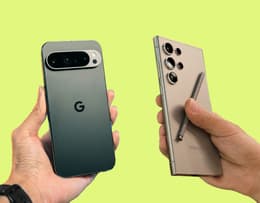
There's no getting around it; the Galaxy S24 Ultra and the Pixel 9 Pro XL are massive phones.
Visually, the two devices display quite different design philosophies. The Pixel 9 Pro XL features thin bezels and rounded corners, while the S24 Ultra offers a much boxier design with squared-off edges. Some find the Pixel 9 Pro XL much easier to grip thanks to its rounded edges. Flipping the phone over, you'll immediately notice the difference in the camera array. Google retains the visor on the Pixel 9 Pro XL, but it doesn't stretch from edge to edge, while the S24 Ultra features a four-lens setup, with each lens raised independently over the back cover. The S24 Ultra also has a built-in stylus housed along the bottom edge.
Display quality
The Galaxy S24 Ultra and the Pixel 9 Pro XL have two of the best displays available. With premium devices, expect premium displays. The Pixel 9 Pro XL has a 6.8-inch LTPO OLED display with a 120Hz dynamic refresh rate and a 2992 x 1344 resolution. The display is fluid and crisp, and with a peak brightness of 3,000 nits, the Pixel 9 Pro XL's screen is easily visible even in the brightest conditions. Samsung chose the 6.8-inch Dynamic LTPO AMOLED display for the Galaxy S24 Ultra. It also offers a variable 120Hz refresh rate, but with a 3088 x 1440 resolution, it is slightly sharper than its competitor. However, with a peak brightness of 2,600 nits, the S24 Ultra's brightness does not match Google's phone. Overall, both devices offer some of the best displays available, and regardless of the specs, they will look equally good.
Performance
Regarding performance, the Galaxy S24 Ultra and the Pixel 9 Pro XL take different approaches. The Pixel 9 Pro XL is powered by Google's Tensor G4 processor and gets 16GB of RAM. Google's Tensor chips aren't built for raw power, but for AI performance, hence the 16GB of RAM for running all the AI features baked into the software. The processor provides a fluid experience running the AI software and the latest games, but it is lacking compared to the Snapdragon 8 Gen 3 processor.
The S24 Ultra is powered by Qualcomm's Snapdragon 8 Gen 3 processor, an absolute powerhouse. This chip performs significantly better than the Tensor G4 in every test. In gaming, it smoothly runs demanding titles at full graphics settings, providing silky smooth frame rates. In terms of overall experience, both chips perform well. Despite it being an easy win for the Snapdragon 8 Gen 3 at running demanding applications, the Pixel 9 Pro XL's everyday performance doesn't differ much from that of the S24 Ultra. While it might struggle with heavy multitasking, it still performs well.
Cameras
The Galaxy S24 Ultra and the Pixel 9 Pro XL offer excellent cameras. Like the Pixel 9 Pro, the Pixel 9 Pro XL has a triple rear camera setup. The setup includes a 50MP main shooter, a 48MP ultrawide lens for wide-angle photography, and a 48MP telephoto lens with 5x optical zoom for capturing distant subjects. The Pixel 9 Pro XL can shoot 8K footage at 30fps or 4K at 60fps. Up front, you get a 42MP forward-facing camera that can manage 4K video at 60fps.
On the S24 Ultra, you will get more flexibility. Samsung equips the S24 Ultra with a quad-lens setup. The setup includes a 200MP main shooter, a 12MP ultrawide lens for wide-angle shots, a 50MP periscope telephoto 5x optical zoom for capturing distant subjects, and a 10MP telephoto lens with 3x optical zoom for closer, detailed shots. This camera array can shoot 8K video natively at 30fps or 4K at 120fps. You'll get a 12MP selfie camera that can shoot 4K at 60fps.
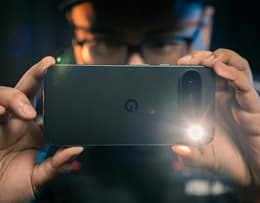
The Pixel 9 Pro XL camera in action.
Depending on your needs, both devices can deliver excellent shots in all lighting conditions. However, like most Samsungs, the S24 Ultra struggles once any motion is introduced, resulting in blurry images. With Google's superior image processing, the Pixel 9 Pro XL offers the best images if subjects are on the move. While the S24 Ultra provides a variety of zoom levels, it just doesn't have the consistency of the Pixel 9 Pro XL, and that's why the Pixel gets the win.
Battery life and charging
The Pixel 9 Pro XL and the Galaxy S24 Ultra are solid performers, offering excellent battery life. The Pixel 9 Pro XL has a 5,060mAh cell that comfortably survives a full day of heavy use. The phone supports 37W wired charging, reaching over 50% in 30 minutes. On the other hand, the Galaxy S24 Ultra ships with a 5,000mAh cell, and with Samsung devices being so efficient, the S24 Ultra gets through a full day comfortably. It supports 45W wired charging, reaching the 50% mark in less than 30 minutes and the 100% mark within an hour. Both the S24 Ultra and the Pixel 9 Pro XL support wireless charging.
Samsung S24 vs Google Pixel 9 series: Honourable mentions
While the main focus has been on the Galaxy S24, S24 Ultra, Pixel 9, Pixel 9 Pro, and Pixel 9 Pro XL, a few other devices in each series are worth an honourable mention. Starting with the budget options for each, Samsung offers the Galaxy S24 FE, while Google counters with the Pixel 9a. Both devices showcase impressive specs, but they cater to different user preferences.
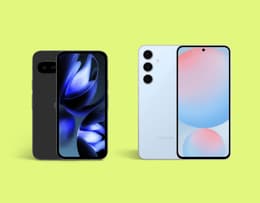
The Galaxy S24 FE and Pixel 9a are budget-friendly options in their respective lineups.
Starting with the display quality, the Galaxy S24 FE features a 6.7-inch AMOLED display with a 120Hz refresh rate, while the Pixel 9a has a more compact 6.3-inch OLED screen with a dynamic 120Hz refresh rate. The Pixel 9a's screen is brighter by 800 nits at 2,700 nits peak brightness. Unlike its siblings, the S24 FE is powered by the Exynos 2400e chip, which still outperforms the Tensor G4 chip on the Pixel 9a. Both devices' base memory configurations start at 8GB of RAM and 128GB of storage, but the Pixel 9a has a larger 5,100mAh battery.
On the camera front, the S24 FE features a triple-camera system that includes a telephoto lens, making it more versatile for photography. At the same time, the Pixel 9a relies on software tricks for high-quality results. As mentioned, these devices cater to different user preferences. If you prioritise premium build quality, raw performance, and camera flexibility, the Galaxy S24 FE is the better choice. However, if AI-driven photography, longer battery life, and a more pocketable design are what you prefer, the Pixel 9a offers excellent value.
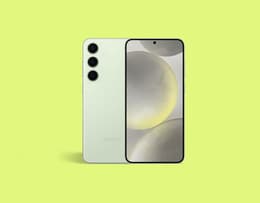
The Galaxy S24+ is the middle child of the Galaxy S24 series.
The other device that deserves an honourable mention is theGalaxy S24+, the middle child of the Samsung series. Like in the Google series with the Pixel 9 Pro and Pixel 9 Pro XL, the S24+ shares much of its hardware and features with the Galaxy S24 Ultra, but it comes in a smaller package and costs much less. They share the same bright and colourful display, class-leading processors, AI features, and solid battery life. The build quality is just as good, but the Galaxy S24+ uses aluminium instead of titanium. On the camera front, it retains the Galaxy S24's triple-camera setup, losing the extra zoom capabilities.
The Google Pixel 9 Pro Fold is another device that deserves a mention. It looks like a regular phone but opens into a tablet. We want to say it builds on the previous Google Pixel Fold, but no. It’s a completely rethought and redesigned device. The new device improves on the shortcomings of the original Pixel Fold, and Google has given its notebook-style foldable a new name and an extreme makeover to better align with the other Pixel 9 phones in the lineup. It offers the largest and brightest display among foldables, new AI features, and several camera upgrades.
Here's how these devices' specs compare side by side:
Feature | Pixel 9a | Pixel 9 Fold | Galaxy S24+ | |
|---|---|---|---|---|
Display size | 6.3 in | 6.7 in | 8.0 in | 6.7 in |
Resolution | 2424 x 1080 pixels, 20:9 ratio, 421 ppi | 2340 x 1080 pixels, 19.5-9 ratio, 385 ppi | 2152 x 2076 pixels, 374 ppi | 3120 x 1440 pixels, 19.5:9 ratio, 513 ppi |
Display features | HDR support Corning Gorilla Glass 3 | HDR support Corning Gorilla Glass Victus+) | HDR support Corning Gorilla Glass Victus 2 | HDR support Corning Gorilla Glass Victus 2 |
System chip | Google Tensor G4 | Exynos 2400e | Google Tensor G4 | Qualcomm Snapdragon 8 Gen 3 |
Memory (RAM) | 8GB | 8GB | 16GB | 12GB |
Storage | 128GB 256GB | 128GB 256GB 512GB | 256GB 512GB | 256GB 512GB |
Battery capacity | 5100mAh | 4700mAh | 4650mAh | 4900mAh |
Charging speed | Wired - 23W Wireless - 7.5W | Wired - 25W Wireless - 15W | Wired - 21W Wireless - 7.5W | Wired - 45W Wireless - 15W |
Rear camera | 48MP (main) + 13MP (ultrawide) | 50MP (main) + 8MP (telephoto) + 12MP (ultrawide) | 48MP (main) + 10.8MP (telephoto) + 10.5MP (ultrawide) | 50MP (main) + 10MP (telephoto) + 12MP (ultrawide) |
Front camera | 13MP | 10MP | 10MP | 12MP |
Dimensions | 6.09 x 2.88 x 0.35 in | 6.38 x 3.04 x 0.31 in | 6.11 x 5.91 x 0.20 in | 6.24 x 2.99 x 0.30 in |
Weight | 6.56 oz | 7.51 oz | 9.07 oz | 6.91 oz |
Colours | Obsidian Iris Porcelain Peony | Blue Graphite Gray Mint Yellow | Obsidian Porcelain | Cobalt Violet Onyx Black Marble Grey Sandstone Orange Amber Yellow Sapphire Blue Jade Green |
Pros and cons
The Galaxy S24 and Pixel 9 series have a lot of similarities at a glance, but they take very different paths to the smartphone experience. Samsung leans into raw power, display tech, and feature-packed hardware, while Google focuses on intelligent software, clean design, and practical AI tools. Whether you're after cutting-edge tech or a streamlined user experience, weighing the pros and cons of each series can help you decide which phone best aligns with how you use your device day to day.
Samsung Galaxy S24 series | |
|---|---|
Pros ✅ | Cons ❌ |
AI-powered features | Familiar design |
Long-term software support | AI features are a hit or miss |
Excellent displays | One UI can feel bloated |
Solid battery life |
|
Versatile camera setup |
|
Excellent performance |
|
Solid build quality |
|
Google Pixel 9 series | |
|---|---|
Pros ✅ | Cons ❌ |
Clean software experience | Tensor chip limitations |
Smart AI features | Limited zoom flexibility |
Excellent cameras |
|
Stunning displays |
|
Unique design |
|
Great battery life |
|
How to buy an affordable Galaxy S24 or Google Pixel 9
Looking for a budget-friendly Google Pixel 9 or Galaxy S24? There are plenty of ways to snag a discount. The first is by patiently waiting for sales events like Black Friday and Cyber Monday to take advantage of the lower prices. Bundle deals are another option. You can pair your device with an accessory from the same ecosystem to enjoy a small discount on the package. A third option is to wait for a newer series to launch, which often brings down prices on the previous generation.
The best way to buy an affordable Galaxy S24 or Pixel 9, though? Shop on Back Market. At Back Market, you can buy a refurbished Galaxy S24 or Pixel 9 at a discount every day of the year. Our deals are available year-round (including right now). And it doesn't stop there: with every purchase, you get free standard shipping, a 1-year warranty, and a 30-day return period. But don't just take it from us. Here's what a satisfied customer had to say:
“Like others, I was rather unsure how purchasing a refurbished phone would turn out. I was delighted to find it was an excellent experience. Phone was immaculate and I even received the phone a day early. It took a while to set the phone up with my carrier which was no fault of anyone but the carrier (Verizon). But in two days, everything was perfect.”
Eric W. - Purchased on April 2, 2025
Why buy refurbished
Buying a refurbished smartphone is a smart choice for two reasons. First, it saves you money. Refurbished devices can cost anywhere between 20% to 50% less than new models, even if they're just a few months old. You get premium quality without the hefty price tag. At Back Market, we sell professionally refurbished devices. These devices are professionally restored to full working condition by industry experts. Before we sell you any device, it is inspected, repaired, cleaned, and thoroughly tested to ensure it's in perfect working condition. Some parts may be replaced to ensure optimal functionality, and all our devices come with a minimum of 80% battery health and a 100% charging capacity.
The other reason to choose refurbished devices is that they are better for the planet. Choosing refurbished devices reduces the demand for raw materials and new manufacturing, and it helps reduce e-waste. In simple terms, it lowers your carbon footprint, which means you're helping the planet by extending the life of tech instead of adding to electronic waste. When you choose Back Market, you're not just saving money. You're making a smarter, more sustainable choice backed by quality guarantees. Still not sure? Here's what people are saying about us on Reddit:
“I've bought several things from Back Market and only had good experiences. Bought a JBL speaker that works great and a Samsung Galaxy Watch that $200 cheaper than anywhere else and works very well.”
Trade in your old tech for cash
Got any old tech cluttering your home? Back Market's Trade-in program makes it easy to give your old tech a second life and get paid for it. You can earn cash for devices you no longer use in just three simple steps. Start by answering a few questions about your device's condition, get an instant quote, and ship it for free. Once it is received and verified, you get paid. It's an easy way to clear your drawers, earn cash, and help save the planet at the same time.
Model | Trade-in value |
|---|---|
£132* | |
£160* | |
Pixel 7 | £226* |
Pixel 7 Pro | £147* |
Pixel 8 | £160* |
Pixel 8 Pro | £188* |
*Trade-in values taken at the date of publication – these are subject to change.
Price and availability
The Samsung Galaxy S24 series launched in January 2024, and the Pixel 9 series debuted in August 2024. The Galaxy S24 lineup features four devices: the Galaxy S24, S24+, S24 Ultra, and the S24 FE. The Google Pixel 9 lineup features four main models: the Pixel 9, Pixel 9 Pro, Pixel 9 Pro XL, and the foldable Pixel 9 Pro Fold. You can grab a refurbished Pixel 9 or Galaxy S24 from Back Market. Here are some of our top picks:
Model | Back Market starting price |
|---|---|
Samsung Galaxy S24 | £332 |
Google Pixel 9 | £356 |
Samsung Galaxy S24+ | £410 |
£389 | |
Samsung Galaxy S24 Ultra | £499 |
£415 | |
£509 |
Final thoughts: A narrow win for the Google Pixel 9 series
Smartphones have improved over the past couple of years, and when two superphones face off, choosing one will boil down to pure preference. Both the Pixel 9 and Galaxy S24 series have their fans and detractors, and both are worthy of being called the best. However, the Google Pixel 9 series sneaks in the win here, but just by a slim margin.
The Pixel 9 series is the complete package, offering stunning displays, decent performance, reliable battery life, superb cameras, and seven years of software updates. While subjective, we find that its rounded corners and overall design are better (the S24 Ultra's boxy shape doesn't help Samsung's case), and the more compact phones are easier to grip with one hand. Google's software and AI features are also better than Samsung's, and with the Pixel 9 phones being slightly cheaper than the S24 series, the Pixel 9 series comes out on top.
The Galaxy S24 series put up a fierce fight but fell just short of victory. The lineup features excellent devices offering some of the best performance available. If you are a gamer or routinely push your device to the max, you may want that extra power from Qualcomm's Snapdragon 8 Gen 3 processor. Samsung also promises seven years of software updates, meaning these devices are future-proof. Featuring stunning displays, flexible cameras, and unique features like the built-in stylus and DeX support, the Galaxy S24 series remains a compelling choice.

